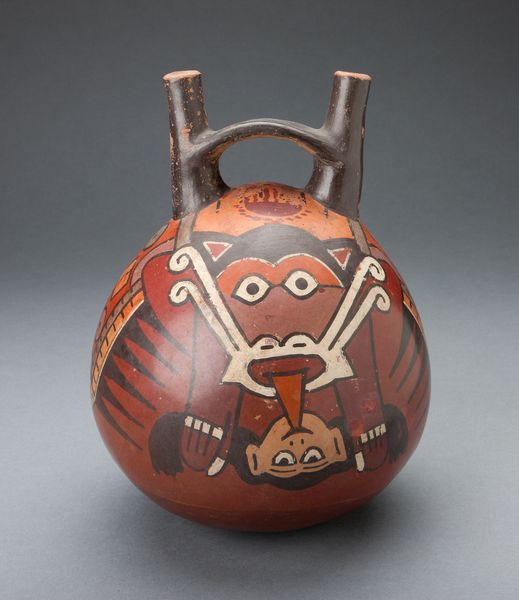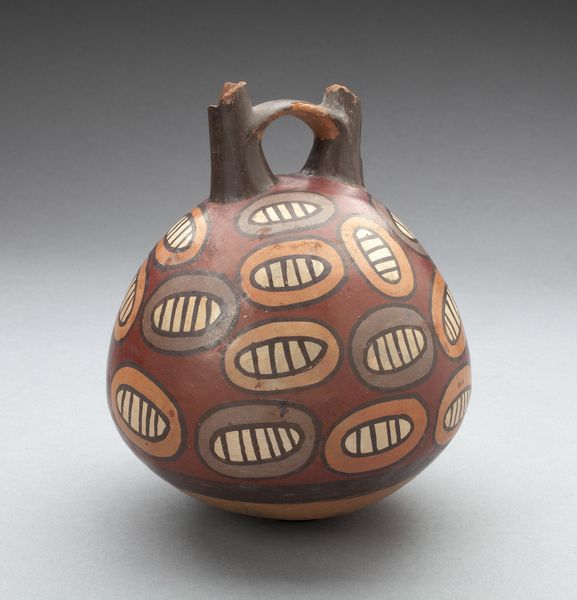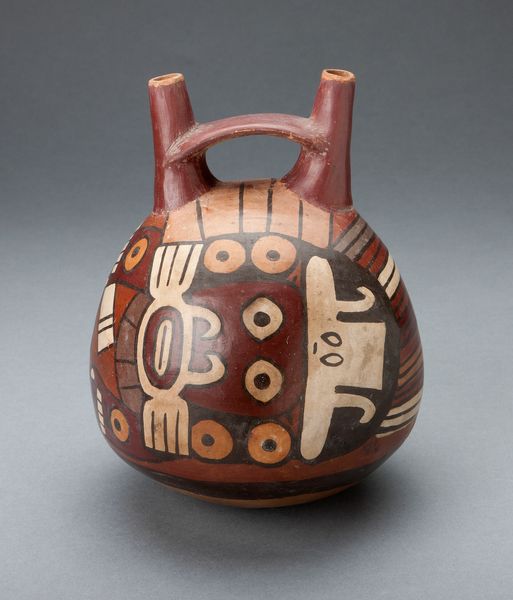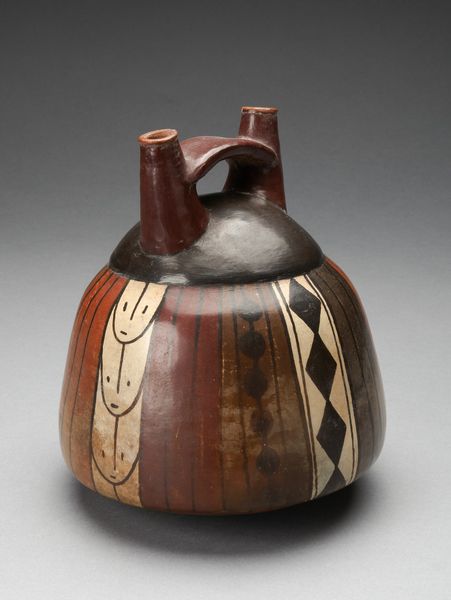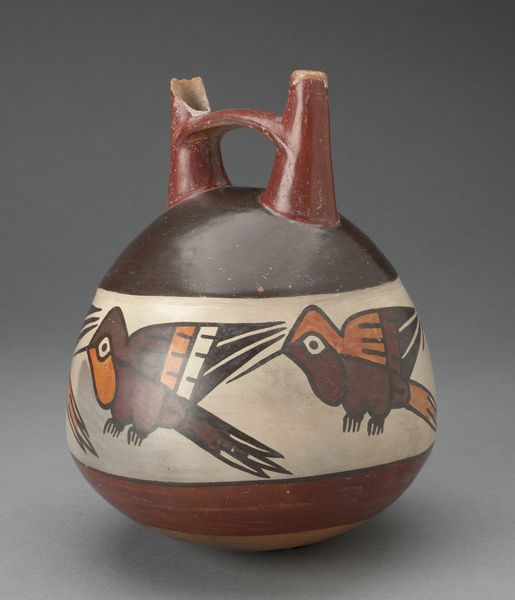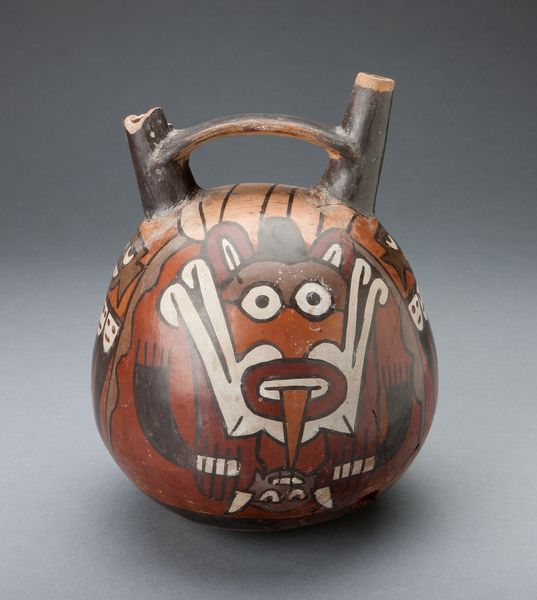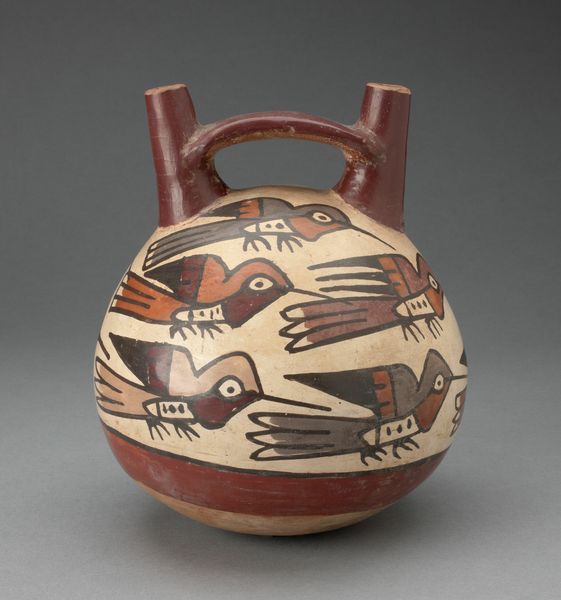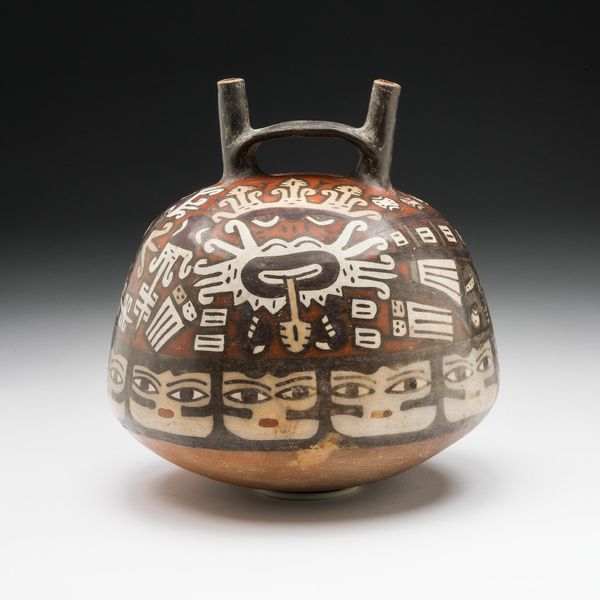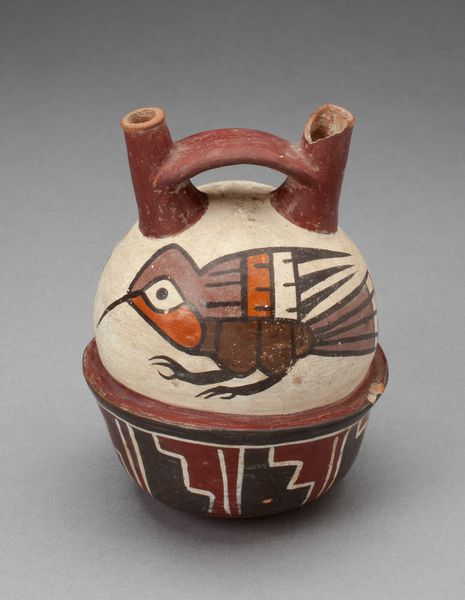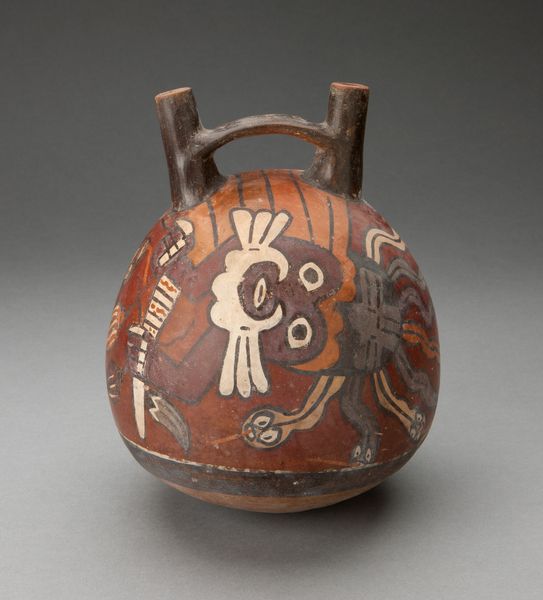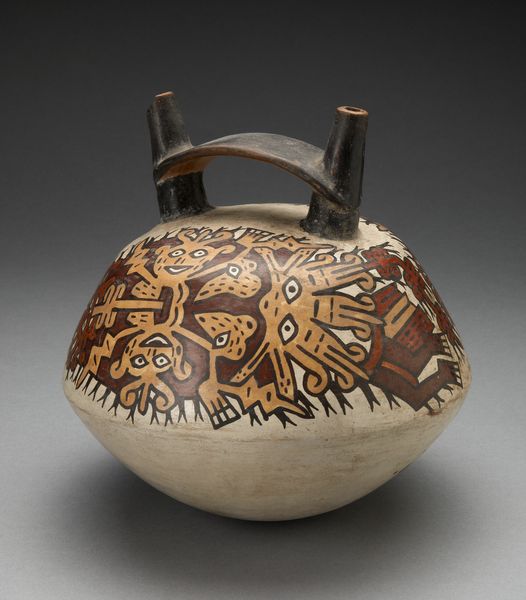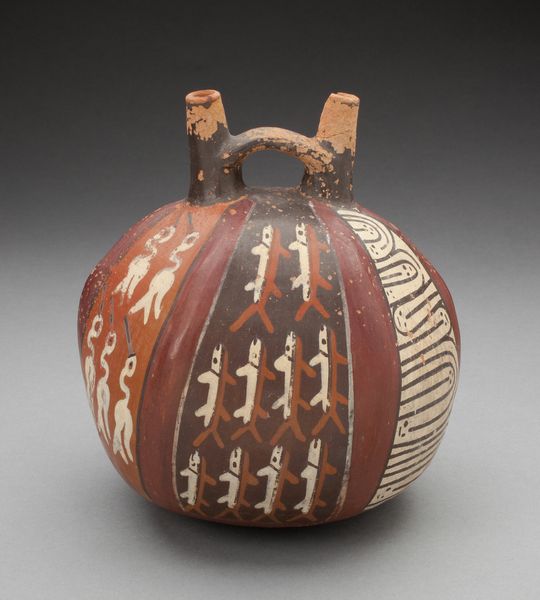
Double Spout Vessel Depicting a Costumed Ritual Performer with Sharks c. 180 - 500
0:00
0:00
ceramic, terracotta
#
ceramic
#
figuration
#
terracotta
#
indigenous-americas
Dimensions: 17.6 × 14.6 cm (6 15/16 × 5 3/4 in.)
Copyright: Public Domain
Curator: This is a ceramic double spout vessel depicting a costumed ritual performer with sharks, made by the Nazca people, sometime between 180 and 500 AD. Editor: It feels incredibly intense, a primal scream rendered in earth tones. The compact, rounded form, almost like a head, only intensifies that feeling. Curator: The "scream," if you will, resonates within its original socio-political landscape. Such vessels played a vital role in Nazca society, often employed in ritualistic practices designed to foster community cohesion and perhaps assert control over their environment through symbolic acts. Editor: Yes, I agree the use of form reinforces narrative! Note how the stylized figure is carefully composed. The stark contrast between the warm red-brown and pale yellows gives an impression of heightened drama. Those bold lines segment and amplify the energy. Curator: It’s compelling to remember this vessel would likely have been produced by skilled artisans working within a sophisticated production system. The paint would have been prepared from minerals found within the landscape; similarly, the clay for the vessel itself would have required skill to find, refine, and work into a stable ceramic object. Editor: Absolutely. Let's go back to the decoration for a second. Look closely at how those shark-like creatures are depicted, abstract yet undeniably present. What sort of philosophy about the natural world, about transformation and power, might it encode? Curator: Probably volumes of complex philosophical ideas. It’s vital to contextualize these stylized forms. They likely encode significant cultural meaning. Beyond surface aesthetics, the visual depictions also reflected and reinforced existing societal structures and religious beliefs. Editor: Considering its physical making alongside its visual complexity offers us unique perspectives to this Nazca work. Curator: Precisely, examining it provides insights not just into artistic expression but also into the technologies and cultural fabrics of ancient civilizations. Editor: And when analyzing the formal composition, we come to terms with a philosophy about our relationship with the non-human, even though we do not know every last aspect that it may hold.
Comments
No comments
Be the first to comment and join the conversation on the ultimate creative platform.
